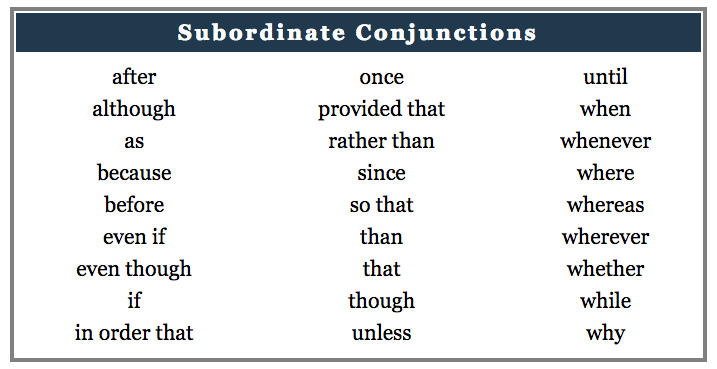Subordinating conjunctions are words that join dependent clauses to independent clauses. They are essential for creating complex sentences that show relationships between ideas. Understanding subordinating conjunctions can help improve the flow and coherence of your writing.
Below is a list of common subordinating conjunctions:
List of Subordinating Conjunctions
- after
- although
- as
- because
- before
- even though
- if
- since
- though
- unless
Subordinating conjunctions introduce dependent clauses, which cannot stand alone as complete sentences. They provide context and establish relationships between the main clause and the subordinate clause. For example, in the sentence “I will go to the store after I finish my homework,” the subordinating conjunction “after” connects the two clauses and indicates the sequence of events.
It’s important to use subordinating conjunctions correctly to ensure clarity in your writing. Misplacing or omitting a subordinating conjunction can lead to confusion or ambiguity. Practice using different subordinating conjunctions in your sentences to improve your writing skills and create more sophisticated structures.
Subordinating conjunctions can also be used to show cause and effect, contrast, condition, time, and purpose. By mastering the use of subordinating conjunctions, you can create more complex and nuanced sentences that enhance the depth and complexity of your writing.
In conclusion, subordinating conjunctions play a crucial role in connecting ideas and creating cohesive sentences. By incorporating a variety of subordinating conjunctions in your writing, you can add depth and complexity to your sentences, making your writing more engaging and effective. Practice using different subordinating conjunctions to improve your writing skills and enhance the clarity and coherence of your work.
